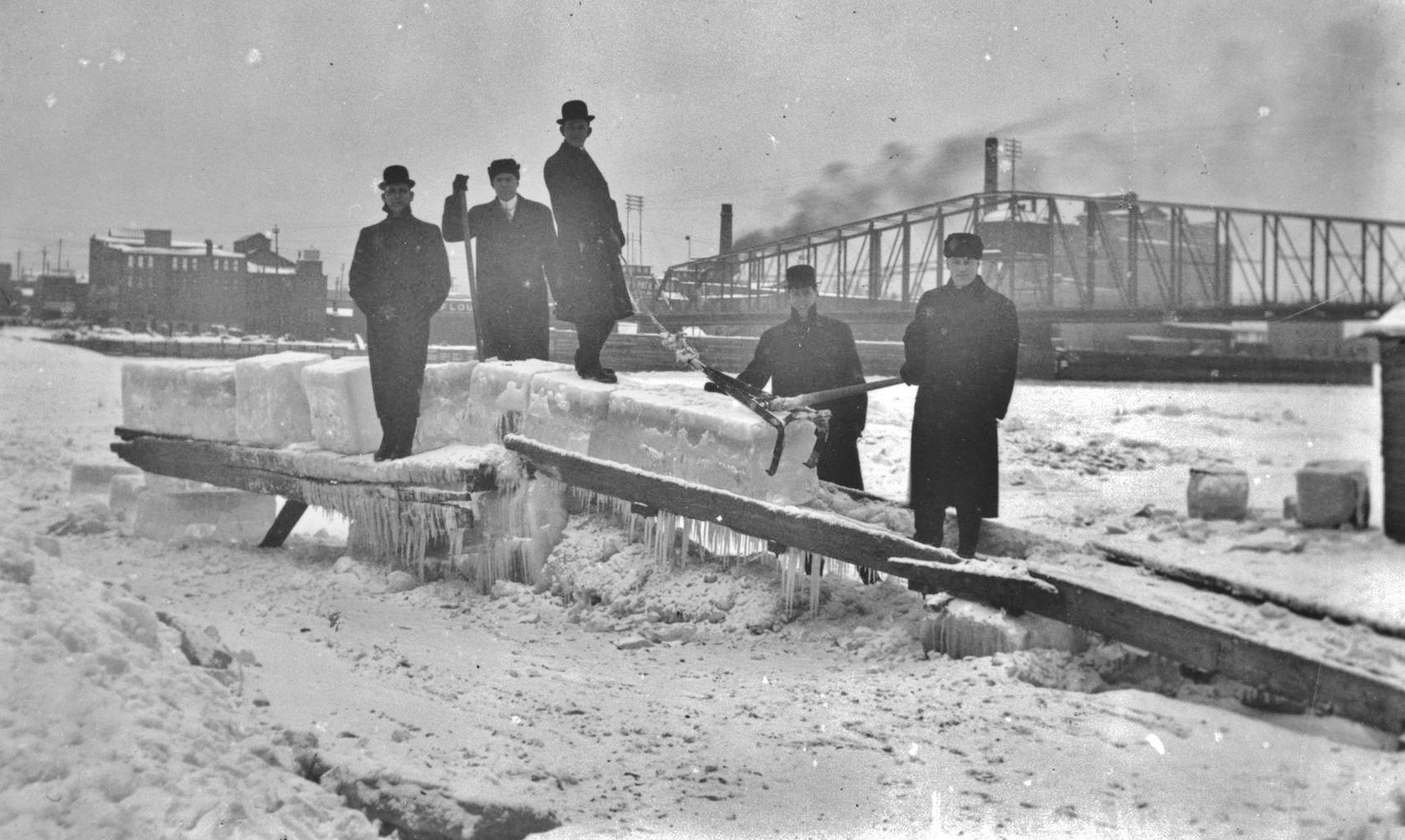Back Home by Chris Hardie
» Download this column as a Word document
» Download the photos that accompany this story
» Chris Hardie’s headshot
So much of our comfortable existence revolves around the convenience and reliability of electricity to operate furnaces, air conditioners and appliances. Folks in Texas can reinforce how important that is.
But before the electrical grid extended into the country, many homes relied on a winter commodity to keep food and beverages cool year-round. States like Wisconsin and Minnesota tapped into our abundant freshwater resources to harvest ice.

Our farm didn’t have electricity until the late 1940s, so much of the garden produce and meat was preserved through canning. Our basement is lined with oak shelves that would be filled each year with jars put up by my great-grandmother Hilda.
Along with a wood-fired cook stove, the other appliance in the kitchen was the icebox for the storage of milk, cream, cheese and other perishables. My great-Aunt Sara told me that every winter ice would be harvested — either from nearby Lake Marinuka in Galesville or from the Douglas Mill Pond in Melrose.
The blocks of ice would be hauled back to the farm to be packed in the icehouse. A layer of sawdust would be applied between levels to provide insulation. Packed tightly, the ice would last until the next winter. On a hot humid summer day, the icehouse would be a favorite stop for a few ice chips, Aunt Sara said, as another block would be brought into the house to be placed in in the zinc-lined icebox.
Today some of my Amish neighbors still use icehouses, although some prefer propane-powered refrigeration. The only difference from 100 years ago would be whether the ice is cut with hand saws, horse-drawn saws or gas-powered saws.
Ice harvesting was once a major business in Wisconsin, especially with the growth of the brewing and meat-packing industries in the late 1800s. The Wisconsin State Historical Society states Milwaukee breweries used more than 335,000 tons of ice per year.
The invention of the refrigerated railcar meant Wisconsin ice was a valuable export commodity; it was shipped to Chicago and then all across the country. Wisconsin ice was known for its exceptional hardness and thickness. Lake Pewaukee in Waukesha County was a major ice location as were the Madison lakes along with La Crosse, Eau Claire, Green Bay, and anywhere that had water, rail or boat access.
La Crosse’s ice industry flourished from the 1880s to the late 1920s, with as much as 80,000 tons harvested from the Mississippi and Black rivers, according to the La Crosse Public Library. Blocks of 25, 50, 75 and 100 pounds were provided for sale.
Each season varied with the weather; the harvest was chronicled in the publication “Ice & Refrigeration.” The January 1920 edition said that cold weather in December 1919 created exceptional ice conditions across the upper Midwest “… indeed, many icemen report having already filled to capacity their ice storages and refer to the crop as the finest in years, and safely gathered in from a month to six weeks ahead of the customary period.”
Safely gathered was a deliberate choice of words because ice harvesting was difficult and often dangerous work. Workers were sometimes farm laborers looking to earn extra income. Other seasonal workers came in from bigger cities. That same edition said a crew of 1,150 workers and 12 teams were added to the usual workforce of the Conklin & Sons Ice Company in Madison to bring in the harvest.
The end of the ice industry came as more-efficient and affordable refrigerators were developed at the same time that many lakes were becoming more polluted. The industry remained in some pockets of the state until the 1950s. The Consumer Service Ice Co. in 1959 made its last home delivery in Eau Claire.
The ice shed on our farm was gone well before my time, but I remember some of my older relatives still using the terms icebox and deep freeze for the refrigerator and freezer. The technology may have been different, but I suspect teenagers in the 1920s probably opened the door to the icebox and asked if there was anything to eat.
Chris Hardie spent more than 30 years as a reporter, editor



